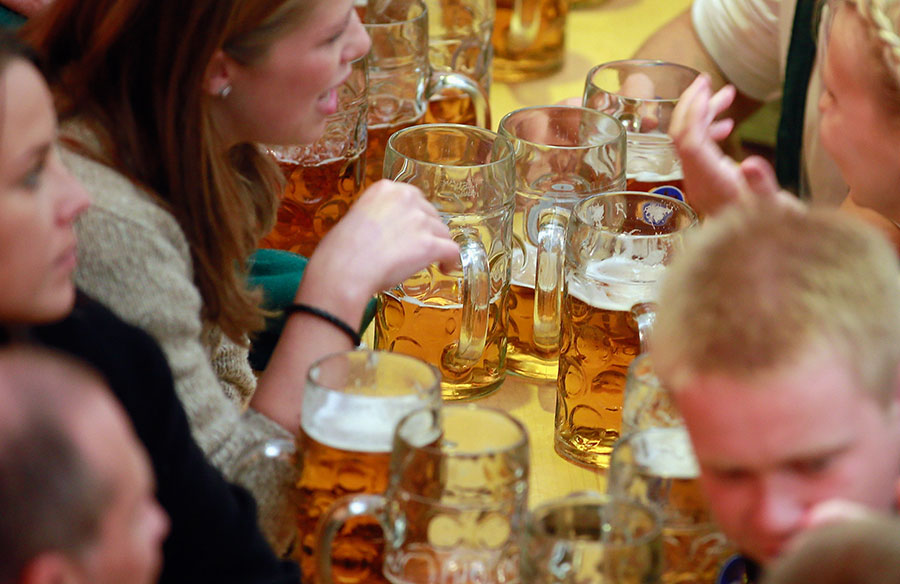Exercising regularly was proven to “cancel out” the risk of developing cancer-related to drinking, while also reducing the risk of death from any illness or event involving alcohol.
Even if alcohol is easy to abuse and is considered a lethal carcinogen, it has remained as an important substance for humans, meaning that it may not disappear from society in general despite the damage it causes. Reversing the effects of alcohol is always harder than just not drinking at all. Governments and religions resort to prohibition and age restriction in order to reduce alcohol consumption and ensure a decent state of health for the population, although alcohol can still be abused and it joins prescription medicine and cigars as the most lethal legal substances prone to be misused. This can lead to damaged mental and physical health, lack of productivity and other mild symptoms such as nausea, headaches and asian flush – remedies for which you can find here: getsunset.com/blogs/

It’s time to pay each drink with a lap
On the other hand, exercise is a contrasting activity that requires the body to be in shape in order to burn calories and improve the overall health of the person. Many believe that running a mile can help someone stop being drunk, but in reality what happens is that the person at that moment has not consumed enough water and ends up doing more harm than good.
The link was researched on a meta-study led by Dr. Emmanuel Stamatakis from the University of Sydney. He recognizes the inaction of an alcohol restriction, which leads the medical community to try and find ways to treat the effects of alcohol consumption in a healthy manner as it appears that humans won’t stop drinking anytime soon.
The study reviewed thousands of subjects that took part in studies of the U.K. over the course of 10 years. The total was 36,370 patients aged older than 40. They were classified by the amount of physical activity performed in regular periods of time, and then their alcohol consumption was analyzed for comparison.
The number of alcohol drinks consumed per week was measured in order to assess the level of hazardous drinking. For the U.S., researchers suggested that hazardous drinking is taking 21 to 49 drinks for men and 20 for women. Mortality and overall risk and incidence of cancer were surveyed on the patients.
First, researchers found out that abstinence is not always better than any amount of alcohol consumption, as occasional drinking appeared to be linked to an improvement of cardiovascular health while paired up with exercise. Patients also appeared to have a greater risk of developing cancer in proportion to how much alcohol they drank per week, as the recommended average is 12 drinks for men and 8 for women.
Dr. Stamatakis and his team then reviewed the cases using the amount of exercise performed by each subject as the main factor of comparison.

A healthy relation between exercise and drinking alcohol
For adults, the team used the USDA’s guideline that two hours and a half of exercise per week is sufficient for a person to remain healthy while recommending to lift weights or perform body-weight exercises with periodicity.
The results showed that exercise was able to completely eradicate the risk of dying from cancer due caused by alcohol consumption, while also reducing the risk of dying from any cause related to drinking. But this was only possible on subjects that did not drink outside the safe restriction of lesser than 21 drinks for both sexes.
Although the results were promising, they were the outcome of reviewing previous studies, which only serve to show that there is an apparent link between reduced mortality from alcohol consumption and regular exercise.
The surveyed studies took into account the patient’s lifestyles from their own reports, not from continued observation. Researchers also did not factor whether the patients consumed any type of drug, their eating habits, daily activities or anything that may contribute to the harms caused by alcohol consumption.
But the research does shed some light about how to fend off the risks related to alcohol consumption, as exercise is often considered one of the best things one can do for its body.

Exercise should always be present
Taking part in moderate exercise improves concentration, relieves depression, improves cardiovascular and mental health, burns calories and fat, and forces the person to eliminate toxins through sweat.
According to the CDC, only 1 in 5 adults meets the 150-minute exercise guideline. For starters, the CDC recommends at least 10-minute intervals of exercise, as it compares the two and a half hour of exercise to sitting on the couch and watching a movie (something you could do after exercising).
The most important type of physical activity is cardio or aerobic, which forces the person to breathe harder and the heart to beat faster. Any type of activity where the body is moving counts as cardio if done vigorously. What is important is to drive up the heart rate; the CDC recommends fast walking, riding a bike uphill, doing water aerobics, or even pushing a lawnmower.
Taking a 30-minute run every other day can contribute towards reaching the 2-hour 30 minutes goal, which in reality is not so bad. And it appears that drinking occasionally may be just another incentive for getting up and start jogging, all in favor of a better state of health.
Source: BMJ
